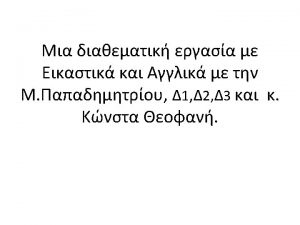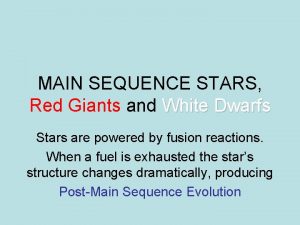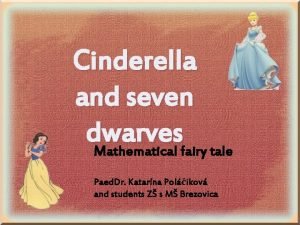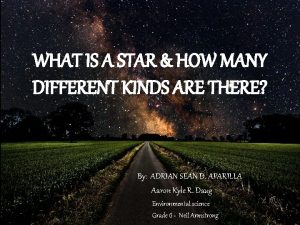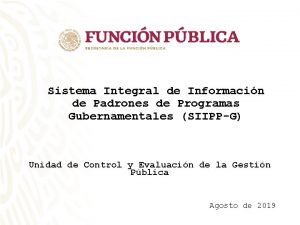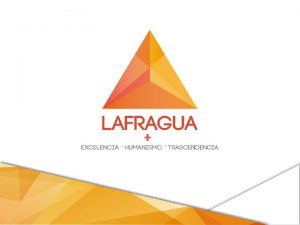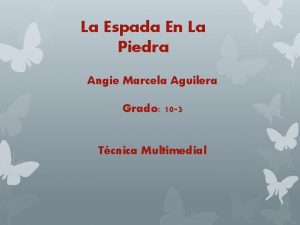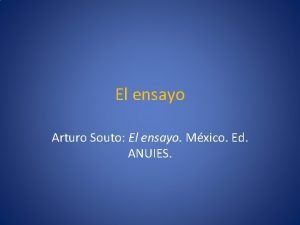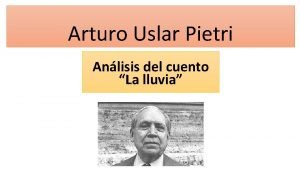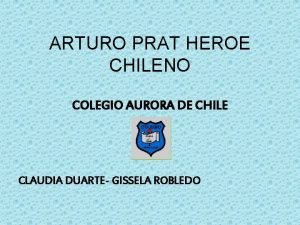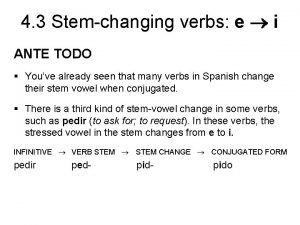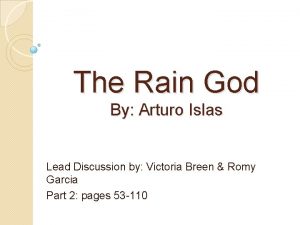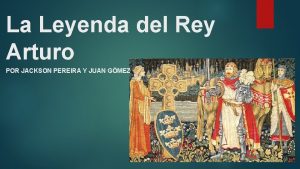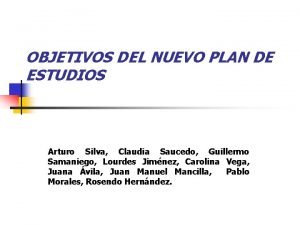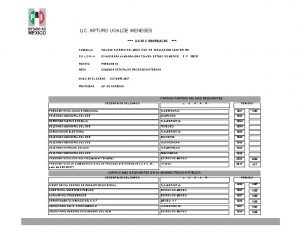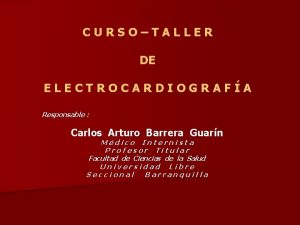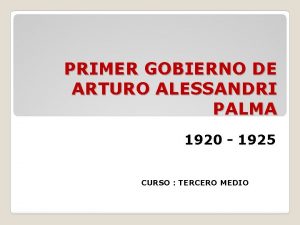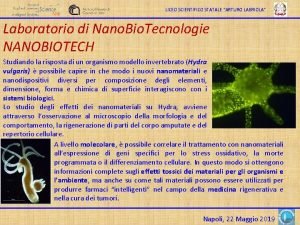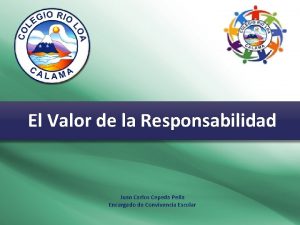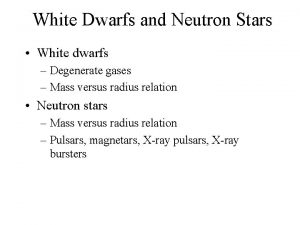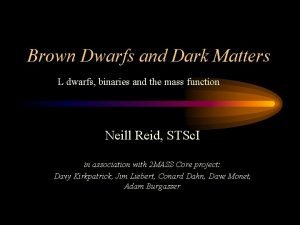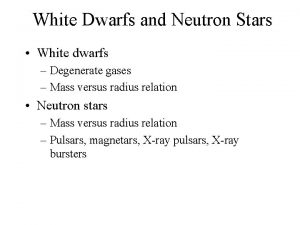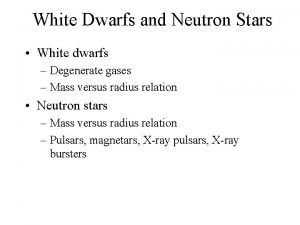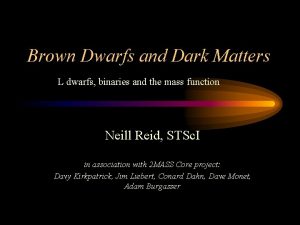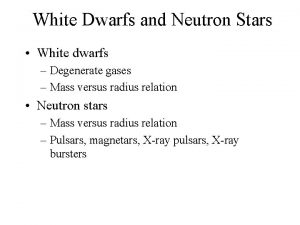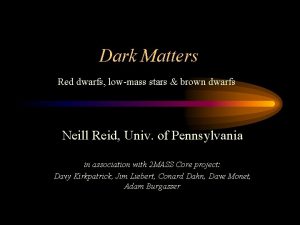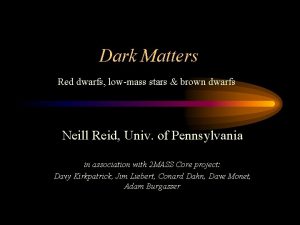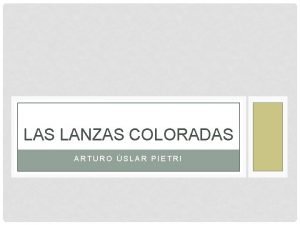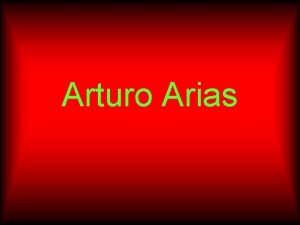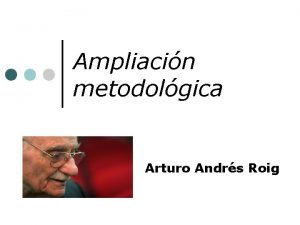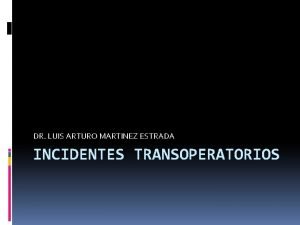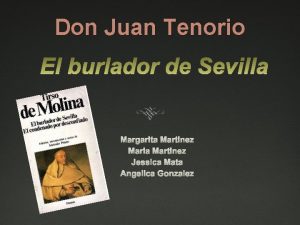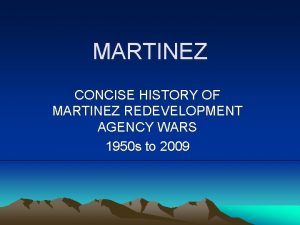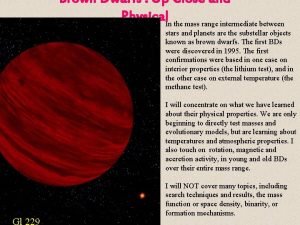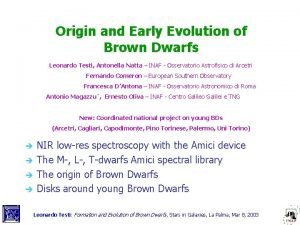T and Y Dwarfs Arturo O Martinez Outline































- Slides: 31

T and Y Dwarfs Arturo O. Martinez

Outline • Overview/Review of Brown Dwarfs • T dwarfs Discovery Classification and Spectral Indicators � � • Y dwarfs Discovery T/Y dwarf transition � � • Peculiar T and Y dwarfs

What are Brown Dwarfs? • Mass ranges ~75 -80 (up to 90? ) MJupiter to ~13 Mjupiter � T dwarf range: 50 to 20 MJupiter Y dwarf range: 20 to 13 MJupiter � � • Temperature ranges 1800 K down to 300 K? � Image credit: NASA/JPL-Caltech

Gliese 229 B • First T dwarf identified Kirkpatrick et al. 1999

2 MASS 0559 -1404 Burgasser et al. (2003 b); Cushing, Rayner, & Vacca (2005); and Cushing et al. (2006)

2 MASS 0559 -1404 (A Closer Look) Burgasser et al. (2003 b); Cushing, Rayner, & Vacca (2005); and Cushing et al. (2006)

2 MASS 0559 -1404 (A Closer Look) Burgasser et al. (2003 b); Cushing, Rayner, & Vacca (2005); and Cushing et al. (2006)

2 MASS 0559 -1404 (A Closer Look) Burgasser et al. (2003 b); Cushing, Rayner, & Vacca (2005); and Cushing et al. (2006)

Near-Infrared Classification • First steps were… difficult Early classification in 2002 � • Based on H 2 O and CH 4 and other methods in “near-IR” • Also based on low resolution spectra (R~100 -1200)

Near-Infrared Classification Primary Standards Reasonably bright Not spectroscopically peculiar Not a variable Not a resolved multiple system Within ~25 degrees of the ecliptic � � �

Near-Infrared Classification • Telluric features are in red bands • T-dwarf spectral standards measured at a resolution of R~400 • Classification of T dwarfs are done in the IR • K I absorption Geballe et al. (2002); Burgasser et al. (2004 b); and Knapp et al. (2004)

Spectral Indices

Spectral Indices Burgasser et al. 2006

Spectral Indices • Saturation for CH 4 -K index values starting at T 7 • Final classification scheme is an average for all Exception for early T subtypes �

Teff Relations • Flattening in the L/T transition come from clouds Golimowski et al. 2004

Optical Classification

Optical Classification • Cr. H(A)/H 2 O ratio is the best classifier as spectral type discriminant • Other indices are more difficult and mostly used to differentiate in specific cases • Agree with mid-IR classification scheme within 1 sub-Sp. T… for the most part Burgasser et al. 2003, Kirkpatrick et al. (1999, 2000)

Mid-Infrared Classification • Started with the launch of Spitzer and the use of the Infrared Spectrograph • R~90 and spectral range from 5. 3 to 15. 3 microns

Mid-Infrared Classification Cushing et al. 2006

Mid-Infrared Classification • H 2 O starts to saturate and is a poor indicator of spectral type for T dwarfs • Other two show good monotonic trends Cushing et al. 2006

Metallicity, Surface Gravity, Condensate Clouds, and Temporal Variations • Pressure broadening of features P/τ ≈ g/κR � Older and more massive (increased g), and metal-poor (reduced opacity) show enhanced gas pressure � • Condensate cloud depletion as you transition into T dwarfs Currently under debate Temporal variations due rotation, log g, metallicity, and other factors? � � Create spectral variations �

Mass-Radius relation • R~M-1/8 Chabrier et al. 2009

Discovery of Y dwarfs! Cushing et al. 2011

Brown dwarfs found as of 2012 Kirkpatrick et al. 2012

T/Y dwarf transition? Kirkpatrick et al. 2012

T/Y dwarf transition? • Sudden absorption features in Y dwarfs? • No clear signature for change in Sp. T

Y dwarfs Kirkpatrick et al. 2012

Spectral Classification for Y dwarfs • Spectral indices do not work for Y dwarfs • Should do overplotting for spectral classification

Peculiar T/Y dwarfs? • Probably a binary This specific case could be a L-dwarf/T-dwarf binary � Burgasser et al. (2006 a)

In-class spectra classification

Summary • T dwarf Sp. T classification is best in near-IR • Rough Teff relation with Sp. T • Y dwarf classification Sp. T is best when overplotting
 Snow white and the seven genders
Snow white and the seven genders Snow white and the seven dwarfs once upon a time
Snow white and the seven dwarfs once upon a time Red giants and white dwarfs
Red giants and white dwarfs How many cinderella dwarf
How many cinderella dwarf Black dwarf star
Black dwarf star Bread sentence
Bread sentence Jaime larrazabal escarraga
Jaime larrazabal escarraga Ing carlos slim
Ing carlos slim Oscar arturo palencia
Oscar arturo palencia Personajes de la espada en la piedra
Personajes de la espada en la piedra Giovanni falcone rita bonnici
Giovanni falcone rita bonnici Cómo es un ensayo según arturo souto
Cómo es un ensayo según arturo souto La lluvia arturo uslar pietri análisis
La lluvia arturo uslar pietri análisis Poesia de la campana escuela naval
Poesia de la campana escuela naval ¡inténtalo! decir (e:i)
¡inténtalo! decir (e:i) Arturo islas the rain god
Arturo islas the rain god Arturo
Arturo Arturo bevilacqua
Arturo bevilacqua Y la semana pasada
Y la semana pasada Ingraine
Ingraine Arturo prat
Arturo prat Clarificar
Clarificar Arturo silva
Arturo silva Arturo ugalde meneses
Arturo ugalde meneses Arturo sfumato
Arturo sfumato Carlos arturo barrera
Carlos arturo barrera Simulacion de peso talma
Simulacion de peso talma Gobierno de alessandri 1920
Gobierno de alessandri 1920 Liceo scientifico arturo labriola napoli
Liceo scientifico arturo labriola napoli Juan carlos cepeda
Juan carlos cepeda Gerardo arturo medina rosas
Gerardo arturo medina rosas Arturo
Arturo

